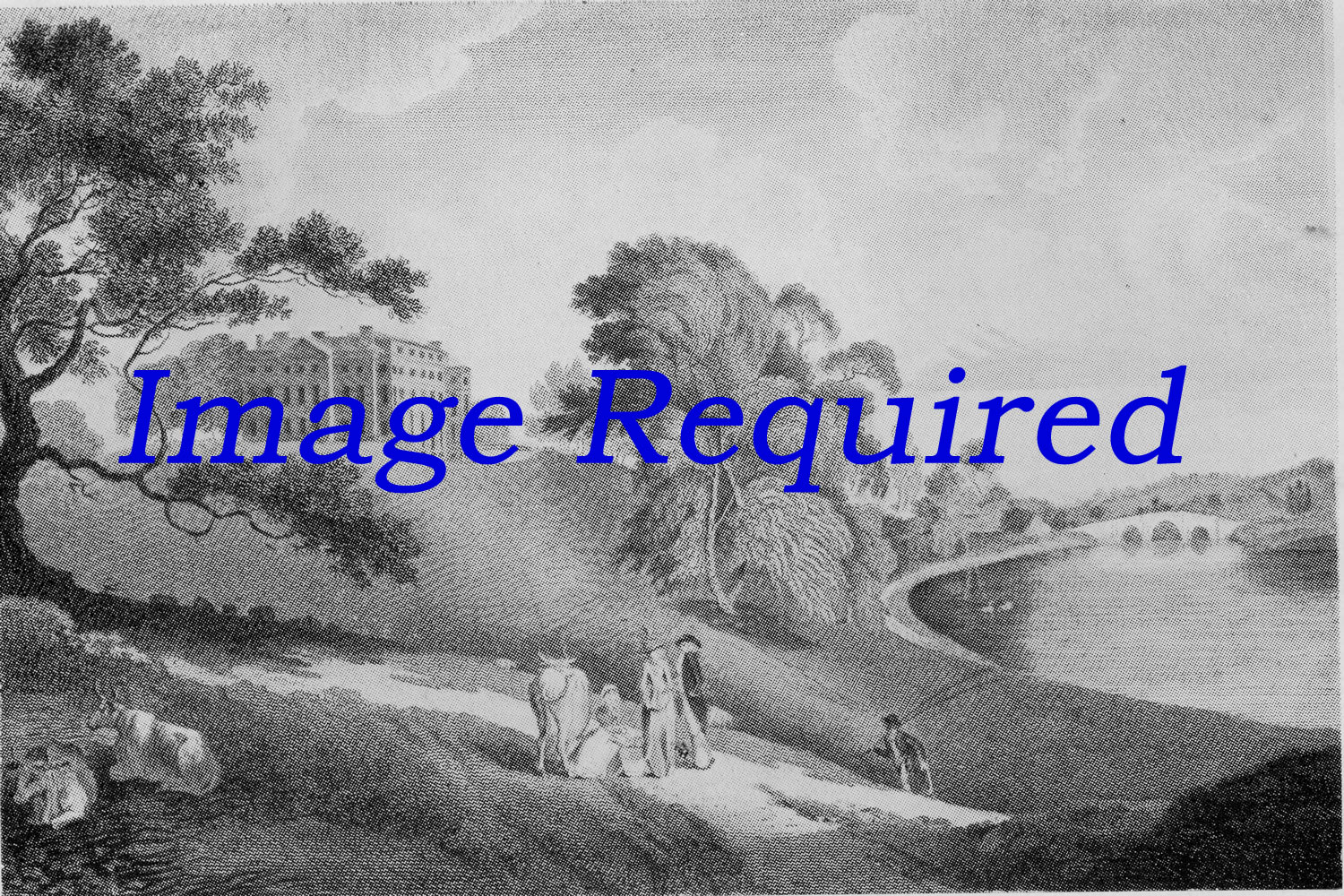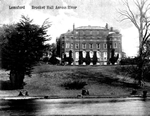Lord Palmerston (1784 – 1865)


Henry John Temple, 3rd Viscount Palmerston
On the death of Lord Melbourne in 1848, the Hall passed to his sister Emily Mary who was married to 5th Earl Cowper of Panshanger who died in 1837 she then married Lord Palmerston in 1839. Palmerston went on to become Prime Minister and in 1865 died, 2 days before his 81st birthday in somewhat bizarre circumstances at Brocket Hall, allegedly involved with a chambermaid at the time involving a billiard table. He had a reputation for vigorous exercise but none of his biographers mention the episode and the story might be just below stairs gossip.
Henry John Temple, 3rd Viscount Palmerston, KG, GCB, PC (20 October 1784 – 18 October 1865) was a British statesman who served twice as Prime Minister in the mid-19th century. Popularly nicknamed "Pam" and "The Mongoose",[1] he was in government office almost continuously from 1807 until his death in 1865, beginning his parliamentary career as a Tory, switching to the Whigs in 1830, and concluding it as the first Prime Minister of the newly-formed Liberal Party from 1859.
He is best remembered for his direction of British foreign policy through a period when Britain was at the height of its power, serving terms as both Foreign Secretary and Prime Minister, as well as a brief period as Home Secretary. Some of his aggressive actions, now sometimes termed liberal interventionist, were highly controversial at the time, and remain so today. He held these great offices, when his party was in power, over a period of 35 years. He was the only Prime Minister to be over 70 years old at the beginning of his first term and is the most recent and oldest British Prime Minister to die in office.
Born the heir to an Irish peerage (which did not disqualify him from being a member of the House of Commons), he accompanied his parents on a two year Grand Tour on the Continent from the age of 8, before attending Harrow School, the University of Edinburgh (1800–1803), and St John's College, Cambridge (1803–1806); from 1803 he was also a militia officer in the period when an invasion by Napoleon was feared. He succeeded to his father's title on his death in 1802. After two false starts in the elections of 1806, he became a Tory MP for a pocket borough in 1807, and was made Secretary at War in 1809, responsible only for the finances of the war, and initially outside the cabinet. He held the job until 1828, only entering the cabinet in 1827 when George Canning became Prime Minister. Less than a year later he resigned when a growing rift split the Tories.
In opposition he switched his focus to foreign policy, and when he returned to office in 1830 it was as Foreign Secretary in a Whig administration; until 1851 he held the position when the Whigs were in power, dealing with a succession of crises in Europe and beyond. In 1852 he was made Home Secretary in the coalition government of Aberdeen, the Tories having insisted on Russell getting the Foreign Office. He was active in the role, passing various reforms but opposing electoral ones. When public discontent over the Crimean War brought the government down in 1855, Palmerston was found to be, despite the Queen's distrust of him, the only Prime Minister who could sustain a majority in Parliament. He had two terms, 1855–1858 and 1859–1865, before dying in office at almost 81, a few months after winning a general election with an increased majority.
s
Image from LLHG
Extra information from en.wikipedia.org/wiki
Contact Us Today info@lemsfordhistory.co.uk. Images and articles welcomed
New Brocket Hall
The estate was sold to Sir Matthew Lamb in 1746 by Thomas Wiinnington . This era was an eventful time Sir Matthew engaged one of the leading architects of the day Sir James Paine and asked him to build a new Brocket hall and Paine did just that. Sir Matthew died around 1765.
James Paine (1717–1789) was an English architect.Essentially a Palladian, early in his career he was Clerk of Works at Nostell Priory, and worked on many other projects in the area including Heath House in the village of Heath in between Nostell Priory and Wakefield.From the 1750s, he had his own practice, and designed many villas, usually consisting of a central building, often with a fine staircase, and two symmetrical wings.
Wikipedia
Early Days
LAround this area had several manors,Symonshyde, Benstead, Heron, and Chewells around the time of Henry III (1207 to 1272 ) these mannors merge and become ‘Watershyppes’Early evidence suggests the house dates back to 1239 and was owned by Simon Fitz Ade. They were also known as FitzSymon.


The Families of Brocket Hall
Early evidence suggests the house dates back to 1239 and was owned by Simon Fitz Ade. They were also known as FitzSymon.
Thomas Lord Fauconberg born 1341 and married to Joan Nevile born 1363 – daughter Joan De Fauconberg Born 1367 :
The most famous of the Brocket family was Sir John Brocket, who married Helen, daughter of Sir Rowland Lytton of Knebworth in 1558 . Sir John Brocket and was high sheriff of Hertfordshire in 1553. Sir John was a close ally of Elizabeth 1st,. Elizabeth was under house arrest at nearby Hatfield house.
The estate was sold to Sir Matthew Lamb in 1746 by Thomas Wiinnington . This era was an eventful time Sir Matthew engaged one of the leading architects of the day Sir James Paine and asked him to build a new Brocket hall and Paine did just that. Sir Matthew died around 1765.
Stephens retired to England. He was created a Baronet, of Montreal in the Province of Quebec in the Dominion of Canada, in 1886, and raised to the peerage as Baron Mount Stephen, of Mount Stephen in the Province of British Columbia and Dominion of Canada
On the death of Lord Mount Stephen in 1921 the house was put up for sale and bought in 1923 by Sir Charles Nall –Cain of the Node Codicote. Sir Charles took the title ‘Lord Brocket ‘ in 1933 and on his death in the following year the estate passed onto his only son Arthur Ronald Nall- Cain (1904 – 1966) Lord Brocket.